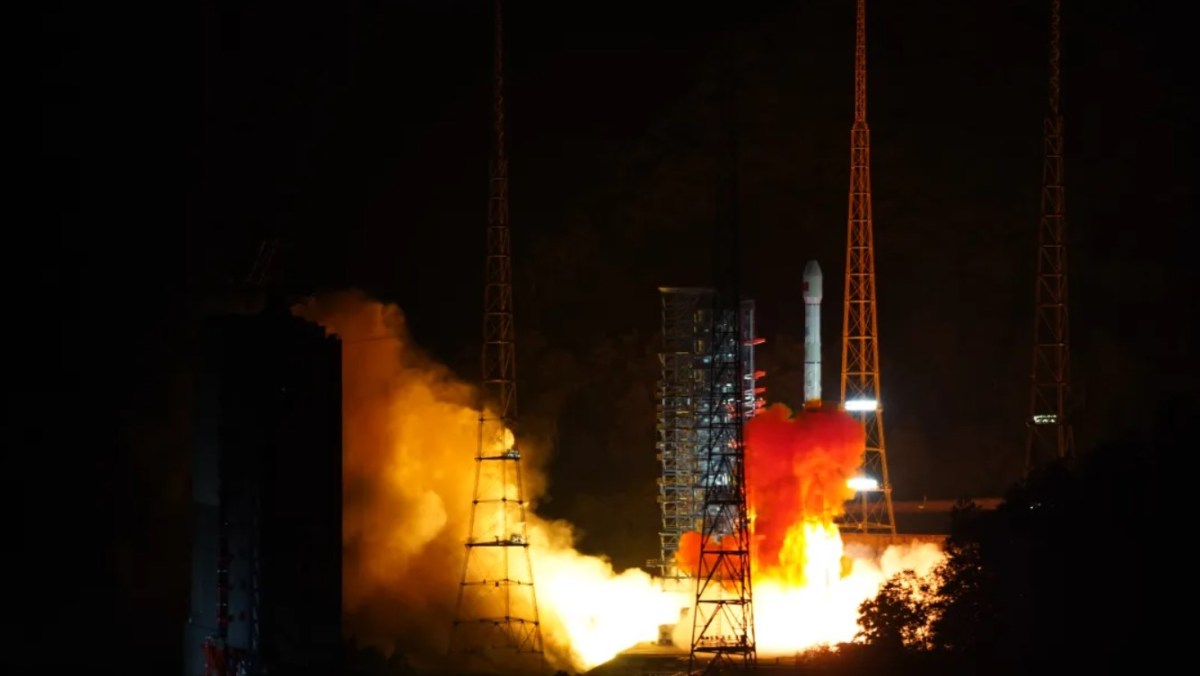PRESTON, United Kingdom — China launched the second of a new series of geostationary communications satellites Thursday, though its purposes remain unclear.
A Long March 3B rocket lifted off at 9:14 a.m. Eastern Aug. 1 (1314 UTC) from Xichang Satellite Launch Center, southwest China. The China Aerospace Science and Technology Corporation (CASC) declared the launch was a complete success.
CASC’s statement revealed the earlier undisclosed payload for the launch to be High orbit internet satellite-02 (Weixing Hulianwan Gaogui-02). It follows the first such satellite, which was launched Feb. 29.
CASC and Chinese media reports, as with the earlier launch, provided few details regarding the satellite and its uses. The satellite was developed by CASC’s China Academy of Space Technology (CAST). No images of the satellite, nor an indication of the satellite platform and its potential uses or customers, were provided.
China already operates a series of ChinaSat (Zhongxing) geostationary communications satellites. ChinaSat-26, China’s first satellite providing more than 100 gigabits per second (Gbps), was launched in early 2023. Various ChinaSat satellites provide services for civilian and military users.
State media Xinhua reported in November 2023 that a first high orbit internet satellite had been completed. It would be used to provide coverage for the entirety of China and key areas along the “Belt and Road” initiative.
“In the future, China Satcom will promote the construction of satellites with larger, single-satellite capacity. It is expected that by the end of the “14th Five-Year Plan”, the total capacity of high-throughput communication satellites will exceed 500 Gbps,” Xinhua reported, referring to the period 2021-2025. It is unclear if this report correlates with the new satellite series.
China meanwhile plans to launch a number of low Earth orbit (LEO) satellite Internet constellations. These include the state-led Guowang and the Shanghai-backed G60 Starlink constellations. The new satellites could potentially be to one of these projects.
China has launched a number of satellite Internet test spacecraft into LEO in recent years. The first batches of satellites for the G60 constellation are expected to launch in August.
In May China also launched a first pair of communications satellites into medium Earth orbit. These were also developed by a CASC subsidiary.
Thursday’s launch was China’s 34th of 2024. CASC stated in February that it aimed to launch around 70 times this year. It added that commercial launch providers targeted roughly another 30 launches.
Missions include the successfully completed Chang’e-6 lunar far side sample return mission, crew and cargo missions to the Tiangong space station, a Sino-French space science satellite, LEO communications launches and more.
The first launch from a new commercial spaceport near Wenchang is expected in the second half of the year. That launch could be the new Long March 12 rocket. There will also be sea launches supported by facilities off Shandong province.
